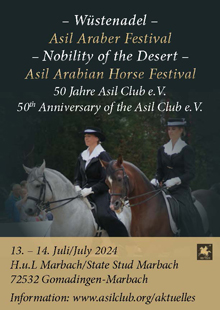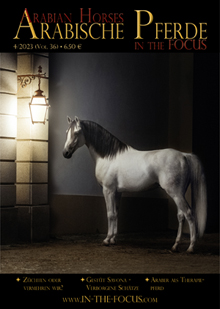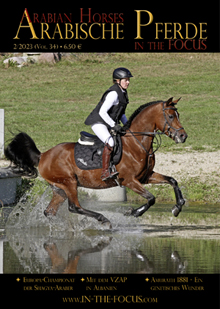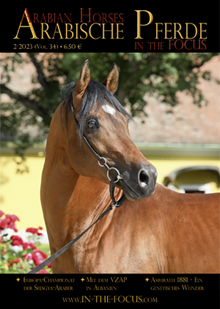Editorial 4/2022
I recently listened to an interview with horse veterinarian Katharina Ros, who was concerned about the health and usefulness of Warmbloods. Much of what she said can also be applied to the Arabian horse. She says that the “durability”, i.e. the fitness for riding into old age, is hardly given anymore. The reasons she gives are that the horses have become longer-legged and narrower in the chest, agile in the joints, more beautiful and more pleasing. Along with these external changes, she also addressed the associated neurological problems: the horses are often atactic, have incoordination, stumble and fall for no reason. Dangerous for riders. She believes that the cause for this would lie, among other things, in various hereditary diseases.
As a lover of Arabian horses, this all seems somehow familiar! Arabian (show) horses have also become longer-legged and narrower in the chest, and have less depth of girth. In addition, the desired long-leggedness is primarily due to longer cannon bones, which are accordingly often thinner – and more vulnerable. And we also know of hereditary diseases in the Arabian – albeit different than in Warmblood breeds – which affect the movement, such as OAAM and CA.
Now our horse breeding in general has become more and more fast-moving: Horses have to be marketed young so that they can quickly bring in money again. This leads to a shortening of the generation interval, because where the breeding goal advances rapidly or changes due to fashion, a young stallion must be found that meets the new criteria, because the “old” stallion is already “out of fashion” or has been overtaken by the breeding goal. However, where the generation interval is getting shorter and shorter, the animals are no longer properly tested for their usefulness, and problems only arise when the next generation – the sons, with very similar dispositions – have already their turn.
In addition to a few highly specialized superstars, Arabian breeding also produces a large number of “average” horses. Whether we like it or not, the leisure rider in the broadest sense is the main customer for them. Whether the (young) horses are given away for free, given away cheaply or sold to cover costs – the horses should at least meet basic requirements in terms of durability, rideability and character so that the recreational rider can enjoy them. But how can this be guaranteed? Instead of relying on young fashion stallions that are currently being hyped in terms of marketing, it would make more sense to rely on older, tried and tested stallions that have proven their health in sport and under the (leisure) saddle for several years, because a stallion that has been involved in sport for years or has been ridden with pleasure can hardly have congenital coordination problems. As a “side effect”, the general health of the breed increases through the use of proven stallions – which in turn pleases the horse owner, who saves veterinary costs.
With this in mind, I wish you the best of luck in your choice of stallion for the upcoming breeding season and I wish us all a peaceful and healthy 2023.
Gudrun Waiditschka













